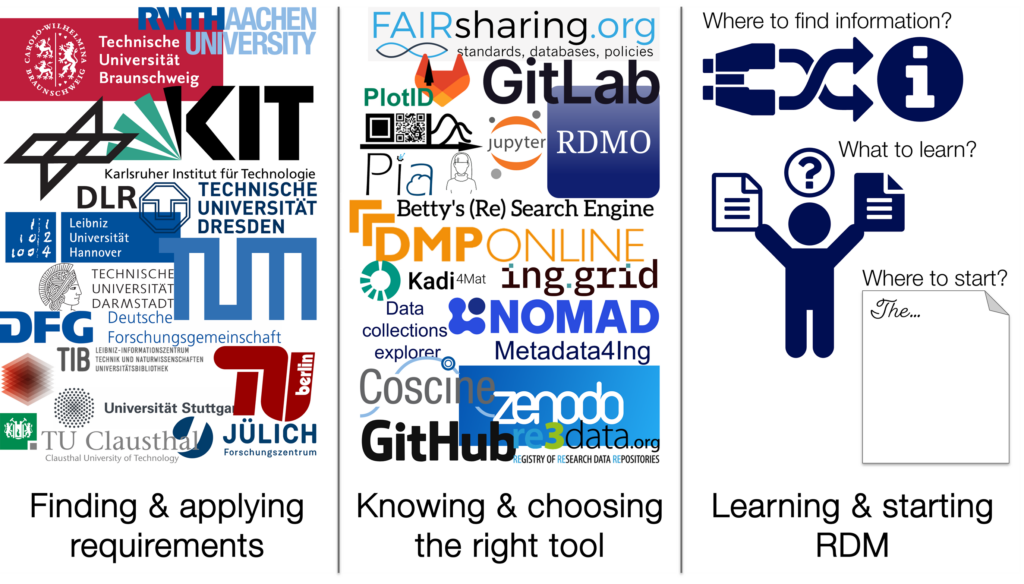By ordering the RDM activities based on their occurrence in the engineering research process, Jarves provides a structure for RDM in engineering. Based on the research’s boundaries, Jarves offers information on the next steps and available tools.
Research data management (RDM) introduces researchers of the engineering sciences to new challenges and efforts to be made. They might not know what they need to do, where to get help, or how to start. Processes, solutions, tools and services are most often not known while the importance of RDM grows in importance continuously. If you are facing similar issues, Jarves is for you!
TL; DR: Visit https://nfdi4ing.pages.rwth-aachen.de/ta-frank/jarves/overview/

The Problem
The applicability of RDM is often hindered by the abstract nature of frameworks like the data life cycle or guidelines for RDM provided by universities or funding organisations. A “How to” of research data management that addresses the immediate needs of researchers when at where they first appear is needed. This includes two challenges: Firstly, basic knowledge and RDM structures have to be set up. Secondly, the direct impact of RDM as an additional part of the researcher’s everyday work has to be kept as minimal as possible.
Our solution
To address these challenges, a concept for a framework based on the following five pillars is being developed. The basis for the framework is a guided RDM process that addresses not only the data life cycle, but takes into consideration the research process as a whole from start to finish. Included in this process is the management of rules and guidelines that affect the RDM. This management is based upon the funding organisation of the respective research project, the university and institute the research project takes place in, as well as the disciplines involved.
To help researchers in their RDM, we also include a decision support system, which will recommend tools and services, taking into account the described user boundaries of rules and guidelines. When these tools have been chosen, training materials are provided on every step, focusing on just the tools that are actually used in the research data management. Lastly, the task of synchronising said tools is partially automated to reduce effort in everyday work.
Meet Jarves
This framework is called “Joint Assistant for Research in Versatile Engineering Sciences” or, in short, Jarves. It is currently being implemented as a demonstrator in form of a web-based tool. It already provides a guided process and interconnects current stand-alone solutions, such as RDMO and Coscine, in one platform and establishes the required technical synergies between them. In addition, training materials are linked to the corresponding RDM steps, providing the correct information at the very point of need.
The management of rules and guidelines as well as the directly connected decision support are being implemented later this year to provide a minimal viable product (MVP) at the beginning of 2024. This will then be enhanced and tested with first use cases.
Jarves’ goal
Our thesis is that this kind of support framework facilitates the practice of RDM in engineering and, as a result, fosters the application of RDM. The framework has been developed with applicability in mind. The research gap was investigated via a survey and focus group interviews with stakeholders and potential users. Subsequently, workshops were conducted to tailor the guided process towards research in engineering science.
See more at: https://jarves.nfdi4ing.de/
Tobias Hamann
Jonas Werheid
